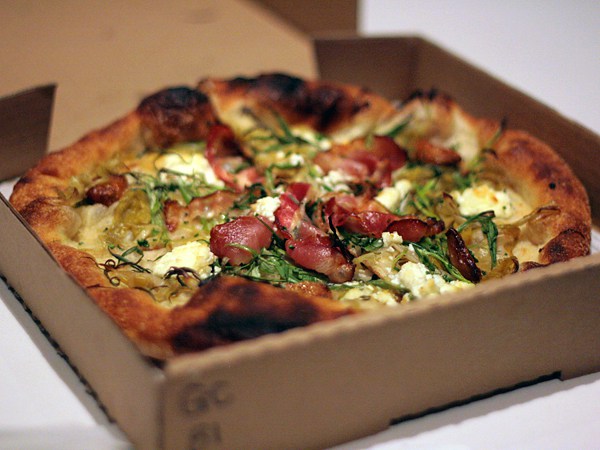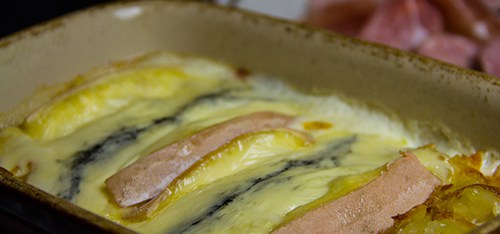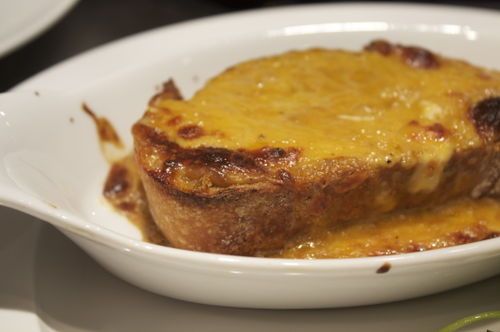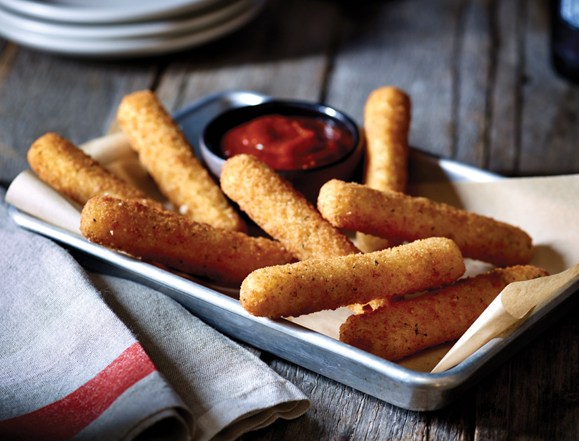When asked what my last meal would be if I knew I would die soon, I generally name lamb, raspberries and pears. The lamb would need to be in the form of a rack or rib chops; I would not care to have lamb stew, shoulder, kidneys or brains as a last meal. The raspberries can be whole or incorporated into a pastry of some kind, such as a Napoleon or Charlotte; about that I’m not particular. Pears, though, are a pipe dream because pears of late have become uniformly styrofoamy. The lusciousness was long ago bred out of American pears, at least the pears that are accessible to us common folk. I have eaten a few Harry & David pears and, while juicy (pro tip: stand at the sink when you eat them), they don’t taste quite as much like pears as I would prefer.
It is perhaps worth mentioning that my hypothetical last meal is far from a regular conversation topic in my home or among my friends. In any case it is unlikely that I will ever be in a position to choose my last meal, because if I am terminal, with an identifiable expiry date, I will likely be unable to eat anything at all, much less a rack of lamb.
The only opportunity most people have to choose a last meal is if they are in prison and about to be executed. Even then, corrections authorities are reluctant to indulge every culinary whim by the condemned — based on my reading, at least — and unless you go in for fried chicken, strawberry sundaes and Tang your options would likely be limited.
There is also the matter of people planning suicide. They would have a choice of a last meal, but that subject is a downer and I’m not in the mood to, as they say, “go there.”
I use the last-meal reference merely as a way to rank my favorite foods. Simply to say, “My favorite foods are lamb, pears and raspberries,” hardly seems an adequate way to describe something so important.
But now that I’m thinking about favorite foods in more than a cocktail-party-conversation way, it strikes me as odd indeed that I don’t think of cheese, especially melted cheese.
Maybe it’s that melted cheese is so readily available. Melted cheese is everyone’s friend, and except for people with physiological challenges related to the consumption of dairy products, who doesn’t love cheese enchiladas, pizza, lasagna or some other dish involving melted cheese? Melted cheese is the Fanny and Alexander of the food world: it’s the most accessible of foods.
As much for myself as my readers, I have compiled a list of great melted-cheese dishes with which I am acquainted and which I would happily accept as a last meal. These are dishes whose central ingredient is melted cheese. The list is grouped geographically according to the place with which the dish is most identified.
Pizza is as good a place as any from which to start a discussion of melted cheese. Few among us dislike pizza. And despite the abundance of so-called artisanal pizzas, pizzas whose crust is made with water imported from Brooklyn or flour imported from Italy, pizzas made by pierced and tattooed graduates of pizza institutes in Campania, pizzas topped with home-cured salume, pizzas baked in 2,000-degree brick ovens — pizzas we might collectively call “fancy” — pizza is forgiving like few foods.
Bad pizza is still pizza, and it takes a lot to render pizza unpalatable. Wet, droopy crust is pretty awful, but as long as the cheese is melted and the sauce is hot and it keeps its shape when you pick it up, it’s pizza.
Here is an excellent pizza.

The crust on a Pizzeria Mozza pizza is dark and borderline bitter, like good coffee or very dark chocolate. It supports what sits upon it with grace and fortitude.
In Chicago, where I lived for 14 years in several stretches between 1981 and 2000, they make a pizza called deep-dish. For all its olive-oil-crispy crust and tomato sauce and sausage and pepperoni and bell peppers, the literal and existential core of Chicago deep-dish pizza is an ocean of melted cheese.

But do you know what? This is also a good pizza.

If you like pizza and you like meat and you aren’t an a-hole snob, a Pizza Hut Meat Lover’s Pizza is a perfectly satisfying thing.
What do all these pizzas have in common beyond their basic structure? Melted cheese.
In Fitou, in the Languedoc-Roussillon region of France, the village of about 1,000 where I spent chunks of 2013 and 2014, there is a pizza place. If you’re in Fitou and want a pizza with chorizo and merguez on it, or capers and anchovies, Stephane the pizza man will take care of you. There is a neighborhood dog who will nuzzle you while you eat and charm you out of scraps.


I do not eat cold pizza. Ever.
And then there is lasagna.
Lasagna is like pizza, with the cheese and tomato sauce and sausage and such, but it has no crust. Instead of crust it has bands of noodles slithering through it. It’s a lot of work to make.
The Italians, of course, hardly control the market in melted cheese.
Mexicans, or people in so-called Tex-Mex restaurants north of the border, prepare enchiladas filled with cheese. They also make a hot, gooey affair called queso fundido, which in Spanish means “fundido cheese.” If you pay extra you can get mushrooms or crumbled chorizo in your queso fundido, or maybe poblano peppers. You’ll scoop up the melted queso and plop it into a tortilla, then roll up the tortilla and eat it. If you run out of tortillas and can’t find the waiter to ask for more, it is permitted to use a fork.
Of course fondue is the queen of melted cheese. But it is more than just cheese, and an artful touch is required to incorporate wine so that something new and better is born.

Raclette is fondue’s cousin, and all it is is cheese. You’ll sometimes see half-wheels placed against an open fire so that the cut edge softens. The melty part is then scraped over boiled potatoes and served with cornichons, or possibly sliced meats.

There are also little tabletop raclette machines with heating elements so each diner can melt cheese and eat it at his own pace.
Calvin and I have twice rung in new years in Zurich. As with most street festivals, there are booths where you can buy food and drink. Unlike most festivals, there are booths where you can buy raclette. You’ll get a little plate with a couple of potatoes and a pickle or two, and the guy will withdraw his wheel of cheese from a heater machine and scrape some of it onto your plate.
There are also booths at the New Year celebration in Zurich where you can buy entire bottles of Champagne, with which they’ll give you some little plastic flutes. It’s quite nice on New Year’s Eve in Zurich.
Here is a picture of the festivities on Dec. 31, 2013. Calvin and I are somewhere in that crowd.
In the Savoy region of the French Alps there is a dish called tartiflette, made from potatoes, cheese, onions, and maybe some lardons. The potatoes are cooked first with onions, then the cheese is melted over them; it’s pretty much that simple. Click here for a good recipe.

There is a restaurant called Au Vieux Comtois where Calvin and I once ate dinner. It is in a lovely city called Besançon in eastern France, and it features tartiflette and other hearty, cheese-focused dishes. When they make tartiflette with Morbier cheese the dish becomes morbiflette, which I think is pretty clever. Click here to watch a video that will make you hungry to the point of getting off of the sofa, going to the car and driving to the nearest place that sells cheese.

Truffade is tartiflette’s sibling from the Auvergne region of France. Potatoes are cooked in duck or goose fat, and then some Tomme cheese is stirred in until it melts. That’s truffade. Click here for a recipe.
Here is some truffade that was served to Calvin and me in Le Mont-Dore several years ago.

For all my rhapsodic waxing about Italian, Mexican, Swiss and French melted cheese, I would be remiss not to acknowledge a few other dishes whose melted cheese I admire.
The Greeks have saganaki.
Until five minutes ago I thought the name referred to the cheese itself but I was wrong. It turns out the saganaki is the pan, not what’s cooked in it. There is shrimp saganaki and there are mussels saganaki.
For cheese saganaki a plank of cheese is dredged in flour and fried, then served with lemon and bread. In restaurants it is often doused with liquor and ignited. Cheese saganaki isn’t so much melted as melt-ish, but it’s close enough.
Welsh rarebit is not Welsh but it centers on melted cheese so it makes my list. Basically melted cheese on toast — with the addition of beer, mustard, cayenne pepper and/or paprika — rarebit is kind of a vegetarian SOS. It seems the “rarebit” name is relatively new, by the way, dating from 1785. Before that, at least as far back as 1725, it was “rabbit.” Go figure.
The cheese sauce can simply be spooned over toast, or it can take a turn under the broiler — cook’s choice.


You don’t have to make your own Welsh rarebit.
It would be wrong to make a list of noteworthy melted-cheese dishes and leave out Applebee’s mozzarella sticks. They get themselves to you while almost but not quite too hot to eat, and the cheese only barely resists the bite. The breading is a delicate, crispy cloak, more a cheese delivery vessel than a recipe element. Between 3 and 7 p.m. Applebee’s mozzarella sticks are half price.
It is hard to go wrong with melted cheese
A note about grilled cheese
There is no question of the high artistry to which the grilled cheese sandwich can rise. In my world it is hard to beat good Cheddar on sourdough, but one doesn’t have to look far these days to find Brie and pickled kumquats on Pumpernickel, Gruyère and smoked trout on rye, or Roquefort and rhubarb preserve on walnut challah.
But my master list, as I explained earlier, contains dishes whose primary focus is cheese, and there are too many other important variables in grilled cheese for it to qualify. You might point out the many other components than cheese in lasagna, pizza and the rest, but to that I would gently recommend that you start your own blog.




